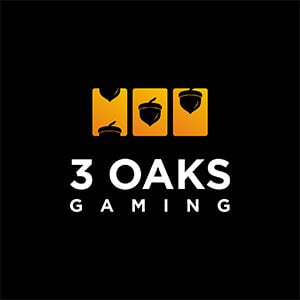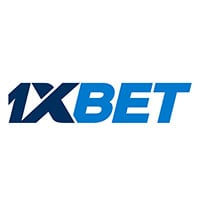Return-to-player (RTP) rates make for a fascinating topic. Attracting customers in this industry involves the promise of those customers winning your casino’s money. RTP rates – the theoretical level of winnings a player can attain from a game – help measure this. Over time, a game’s RTP should average out, although precisely how long this period of time lasts can be far longer in some cases than others.
Consultant Alex Czajkowski, who has extensive experience in online casino and slots, uses an apt example to illustrate the concept. While lottery games can hold a 60% RTP, perfect play of basic strategy blackjack can offer RTP as high as 99.6%, with the majority of online slots set at 95% to 96%. As Czajkowski tells Gambling Insider: “The slots at McCarran International Airport in Las Vegas at the departure gates must be set to 85%, because you never win – and they don't care as you are leaving anyway.”
The Gambling Commission’s definition of RTP rates for the British market is another useful reference point. The Commission requires all gaming machines (including fruit machines and fixed-odds betting terminals) to “clearly display” their RTP rate. Even then, it urges players to realise this rate is an average across multiple uses of the machine; not a specific guide for every time a game is played.
As the Commission goes on to explain, RTP is generally measured across 10,000 or 100,000 games or more. That kind of sample size actually makes the impact on an individual game very small indeed. Even so, the regulator wants all firms licensed in Great Britain to make RTP information as clear as possible and there is certainly logic to ensuring this kind of transparency. But it also begs the question: does an ‘ideal’ RTP rate exist?
From Czajkowski’s experience, casinos on the Las Vegas Strip are more generous, setting a 95% rate for their dollar or multi-denomination slots. RTP rates will also reduce as stakes fall, for example on quarter, nickel or penny slots, although this does not apply online, where RTP rates remain constant and independent of stake size. Czajkowski adds: “If you see a slot actually publish its RTP, like some NetEnt games do, you can probably trust that figure.”
This unprompted mention of NetEnt brings us to the original inspiration for this article. In September, the supplier launched what it described as an industry-first product within live casino. Developed in collaboration with operator Rank Group, Perfect Blackjack was released on the Grosvenor Casino brand and later across the whole NetEnt Live network; it will be showcased for the first time at ICE London, where there will be a playable version at the NetEnt stand.
The idea of the game is a player being dealt cards according to the ‘perfect’ strategy – with players pre-selecting whether they want to auto-split or double down. Its RTP rate is 99.5%, although it’s worth noting perfect blackjack is an overall concept. The product itself is referencing perfect blackjack in name only.
“The RTP rate across various live blackjack products on the market is set to a range between 99.3% and 99.6%,” Andres Rengifo, Director at NetEnt Live, tells Gambling Insider. “In other words, the RTP is not in any way what sets Perfect Blackjack apart: its uniqueness is a lot more about simplicity and speed. When we first looked at the concept of Perfect Blackjack, we liked the fact we could be transparent about perfect strategy, which most blackjack players use anyway.”
The aforementioned rates of 99.3% to 99.6% are industry-accepted figures for live blackjack, likely the result of plenty of trial and error through the years. But discussing wider online blackjack games, Czajkowski again warns variations can return the RTP closer to a standard slot machine. Such variations include Blackjack Switch or Player's Choice. Tempting as they might seem, he says, they are not mathematically going to enhance a player’s chances.
When we ask why 99.5% is a ‘good’ RTP rate for blackjack products, the consultant says this is “a little bit of a loaded question.” Playing perfect basic strategy, or everything the ‘book’ tells you to do, indeed equates to a 99.5% RTP. Blackjack though, is a game that comes in “waves of good and bad luck.” Czajkowski explains: “I rolled $10 up to $50 the other day while ‘testing’ a new casino and was chuffed, but promptly lost it all. So you need to have a sufficient bankroll. For blackjack, 30 units [minimum bets] should keep you alive; playing $10 tables, have $300 in your bank roll. Playing $50 tables, you’d better have $1,500 on you.”
Another question we pose – this time to Rengifo – is whether a 99.5% RTP makes a game reliant on high volumes and is perhaps, therefore, a higher risk for casinos. “Making any live casino game profitable requires a high volume of bets: the essence of operating these games efficiently is all in the details and correct configuration of tables,” he responds. “Setting the right minimum/maximum bet ratio, the ideal speed for a game round, boosting the profit margin with side bets and – perhaps most importantly – having an engaging atmosphere on the table, are all details casinos need to generate high volumes.”
Widening the discussion to include an array of table and slot games, not just blackjack, all the above points to our headline question: does an ‘ideal’ RTP rate exist? For Czajkowski, his conclusion is no – an answer best demonstrated by variable RTP rates. Rather than settling on a magic number, differing percentages can be used as an important tool by an online casino operator.
“I've seen loss-leader games with an RTP of 105%,” he explains. “That generates a lot of turnover and a lot of winners; until they switch the RTP back to normal. Not all online slots have variable RTPs, but many do and the operator can use these strategically. For example, sending a losing player to a high RTP game and rekindling their enthusiasm.”
While the impact of RTP rates cannot be denied, then, the wide range of products within a casino’s armoury call for variety and, to some degree, even experimentation. That points towards flexibility rather than a rigid set percentage, taking each game or game category case by case. If you’ll pardon the pun, blackjack is the ‘perfect’ example, as the game’s RTP is more fixed, and developers and operators should not rely solely on that rate to entice customers.


































